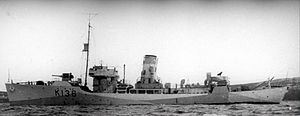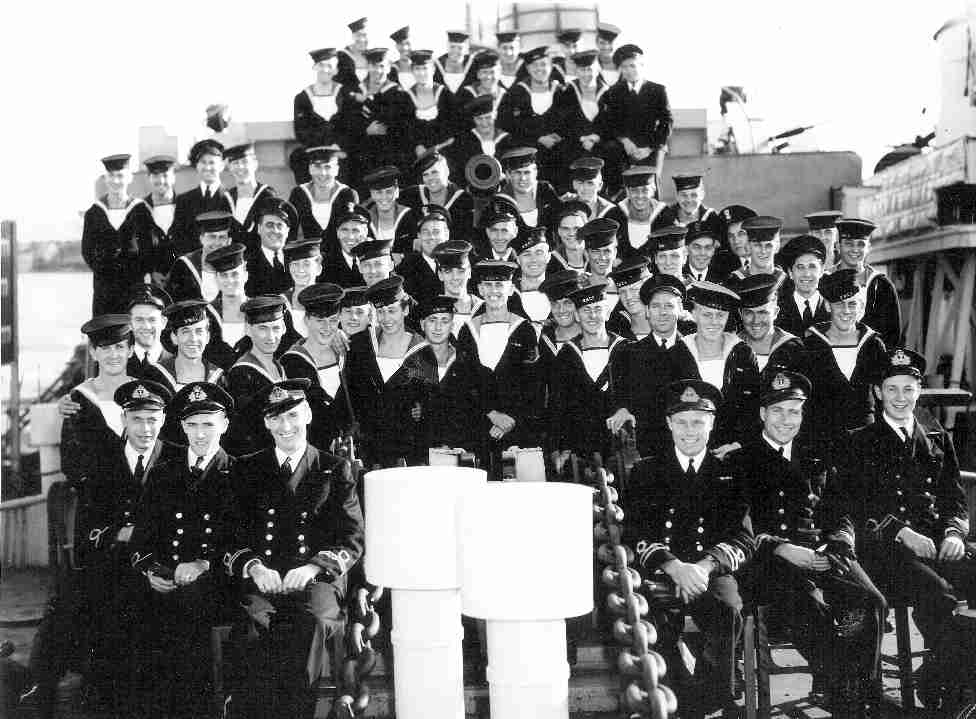
HMCS Shawinigan (Wikipedia photo).
Seventy years ago today, during the night of November 24, 1944, or the early morning hours of the 25th, the Canadian Corvette the HMCS Shawinigan was sunk in Newfoundland waters by the German U-Boat U-1228, resulting the death of all 91 men aboard. The ship was sunk off Channel-Port aux Basques, Newfoundland, at the mouth of the Gulf of St. Lawrence. It represented the last casualties of the Battle of the St. Lawrence and the worst case of military deaths in Canadian or Newfoundland territory during the war.
The Canadian waters of the Gulf of St. Lawrence were very much a theater of war and Canadian shipping was constantly at risk. The Germans had no organized battle plan for Canadian waters, but German u-Boats took advantage of targets of opportunity within the Gulf. German U-boats were documented to have come within 172 miles of Quebec City.
Blackout regulations were in place along the coast, and “dim outs” were ordered further up the river. Coastal residents would witness battles taking place, but military censorship prevented these from being reported in the press. Most Canadians realized the threat, but ironically, despite the censorship, the general perception was that the situation was more serious than it actually was. Nevertheless, there was a real battle raging, and there was a risk to shipping far inland.
In early October, 1944, U-1223 entered the Gulf of St. Lawrence. On October 14, it inflicted serious damage to the frigate HMCS Magog, killing three crewmen and injuring three. On November 2, it sunk the freighter SS Fort Thompson.
On November 24, the Shawinigan and the U.S. Coast Guard Cutter Sassafrass were assigned to escort the ferry Burgeo from Sydney, Nova Scotia, to Port aux Basques, Newfoundland. The Sassafrass (which remains in service today, as the Nigerian Naval Ship Obula) was detached from the escort, and the Shawinigan departed on an independent anti-submarine patrol and informed the ferry that it would meet her in the morning. After the sinking of the ferry Caribou on the same route in 1942, with 137 deaths, all passenger ferries had military escorts.
The Burgeo left Port aux Basques in the fog, but could not find the Shawinigan. Radio silence prevented the ferry from making any notification, and she made the crossing to Sydney unescorted. It wasn’t until the Burgeo arrived at Sydney that the navy knew that the Shawinigan was missing.
Despite a search, only flotsam and six bodies were found. Some of the bodies had bullet wounds, indicating that some men made it to lifeboats.
 The wreck of the Shawinigan has never been found. The blast that sunk her was loud, and was reported by many on shore. Even the master of the Burgeo later reported that he heard a strange noise that shook his house, but never made the connection with the missing escort ship. Despite sonar searches over the years, the final resting place of the Shawinigan and the grave of most of her crew has never been located.
The wreck of the Shawinigan has never been found. The blast that sunk her was loud, and was reported by many on shore. Even the master of the Burgeo later reported that he heard a strange noise that shook his house, but never made the connection with the missing escort ship. Despite sonar searches over the years, the final resting place of the Shawinigan and the grave of most of her crew has never been located.
The U-boat returned to its home port in Norway in December and set out for another cruise in April 1945. It saw no action prior to the German surrender, and on May 17, 1945, it surrendered to the U.S. Navy at Portsmouth, New Hampshire.

Crew of the Shawinigan (Naval Museum of Manitoba Photo).
References
- Shawinigan at ForPosteritysSake.ca
- Shawinigan at hmcsmagog.com
- Shawinigan at Naval Museum of Manitoba
- Shawinigan at uboat.net
- Shawinigan at Wikipedia
- Sinking of the Shawinigan at CBC
- Battle of the St. Lawrence at Quebec Chronicle-Telegraph
- Submarine U-1228 at Wikipedia
Read More at Amazon
